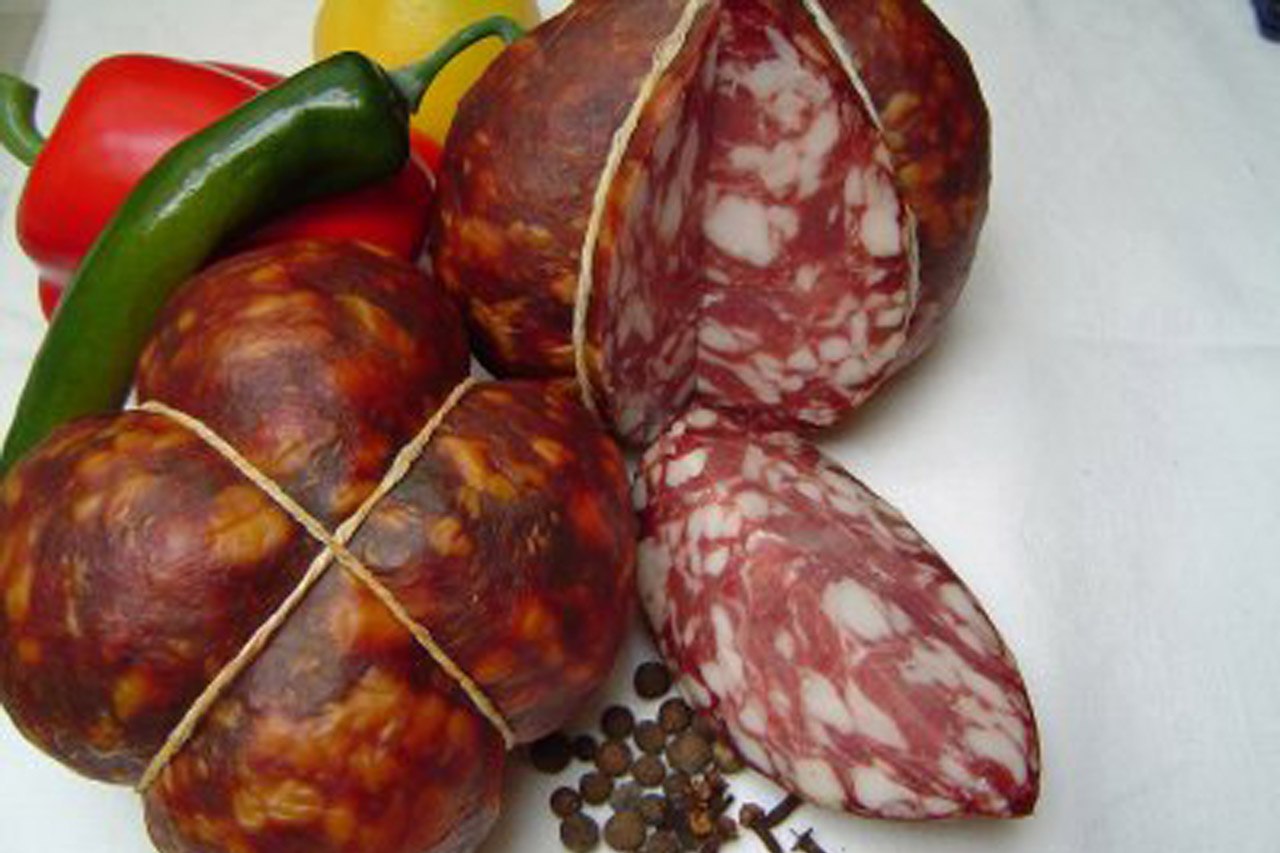Description
The Skilandis TSG is lean, semi-lean or fat, pork and beef based product, mixed with pork lard, garlic, salt and spices, in a natural sausage.
Production Area
The traditional production land of Skilandis TSG covers the entire Lithuanian area.
Production Method
The production is made with beef and pork coming from slaughtering of adult animals. The pork is cut in slices and mixed with ground beef and the other ingredients, and then mixed for about 10 minutes. The mix obtained is seasoned for at least six hours at a maximum temperature of 4°C. After seasoning, the mix is slowly put into the sausages, which consists of pig bladder or bovine caecum, with particular attention to avoid the addition of air. Then the product is tied up and hanged from appropriate frames to season, a phase which lasts at least three days to allow the stuffing to become more compact and aromatic. Later the smoking phase takes place at a temperature of 18-30°C, in a discontinuous way, for maximum 2-15 days. Finally, the product is dried for about 30 days until it acquires its typical colour and flavour.
Appearance and Flavour
Skilandis TSG has the shape of a drop or a cylinder, with a diameter of at least 80 mm. It has an uneven surface and a compact consistency. When cut, its colour spans from red-brown to dark red and is not uniform due to small slices of light fat. The flavour is spicy-sourish, hot and salty, whilst the aroma is typically smoked.
History
The tradition of Skilandis TSG has ancient origins in Lithuania; in fact, in a recent book it was recognised the first of the typical meat-based products. This sausage was traditionally eaten in summer, when the countries were subject to big agricultural works like haymaking and harvesting. In addition, a book by a Lithuanian writer from 1845 reveals that Skilandis was traditionally offered the guests. It is possible to find mentions of the product in many classical works from the 19th and 20th centuries, whilst this word is already mentioned in the16th centuries in the registers of different regions of the Grand Ducky of Lithuania and in some dictionaries, amongst which the Lithuanian-Prussian of 1680 and later, the Lithuanian-German of 1747.
Gastronomy
Skilandis TSG, when whole, is stored in a cool and dry place and, when cut in slices, has to be stored in refrigerator and to be eaten within a few days. It is traditionally eaten cut in very thin slices with pumpernickel bread, but it can also be used as a hors d'oeuvre with the bulviniai blynai, which are local pancakes with potatoes, fresh vegetables and mushroom sauce or Lithuanian cream.
Marketing
The product is sold as Skilandis TSG. It is sold vacuum packed or in protected atmosphere and can be marketed whole, halved or in slices, in pieces weighing from 0.4 to 2 kg.
Distinctive Features
Skilandis STG owes its unique and unmistakable organoleptic features to the fermentation processes made by micro-organisms which develop during the seasoning phase and are further enhanced by the following phases of drying and fermentation.






